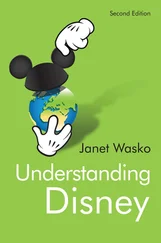Have you been patiently reading along, but also wondering when I was going to address directly what you perceive to be the heart of the matter: the cause(s) of asexuality? If certain chapters touching on causes (e.g., chapter 6) only whetted your appetite for a more direct discussion of etiology, I can’t blame you. Causes are important to people. They are not merely the preserve of adults—children are also fascinated by them. Sometimes children are so obsessed and unsatisfied when an adult answers their “why” question that it sets off a spiraling series of additional “but why” queries. So, finding out about the “cause” of an event merely prompts their curiosity about the cause behind this cause, and the cause behind that cause, and so on. After being beaten into submission by the barrage of questions, realizing that the child has a point and that the mysteries of the universe are often unknowable to children and adults alike, a parent may resort to the ambiguous, end-all answer: “Well, just because, dear….”
Subdisciplines of philosophy and psychology are devoted to how we determine causes—how we know what we know in epistemology (philosophy), and how we attribute causes, including laying blame, in attribution theory (psychology). Indeed, social psychologists suggest that we are not only obsessed with causes but also prone to bias in our thinking about them. I raise this issue because even we scientists may forward a cause that reflects bias. Keep that in mind as you read along!
What is a cause? We may think of a cause as something that gives rise to an event or phenomenon. In other words, causes deal with the hows and whys of events. But causes are complicated, and not just because, as social psychologists suggest, humans have bias in the way they make attributions. Often phenomena have multiple causes. So, for example, asexuality may be caused by both a biological event (e.g., prenatal hormones permanently organizing a site in the lower brain) and an environmental one (e.g., no exposure to sexualizing social forces, such as randy peers). [50] Of course, when a phenomenon has multiple causes—say, two, for this example—they could be two discrete biological causes, or two discrete environmental ones, and not necessarily one of each.
Sometimes causes are interactive or conditional; that is, they only occur in one circumstance but not others. So, perhaps a lack of sexualizing social forces has a profound effect on one individual because he or she is predisposed to these forces, but a lack of sexualizing social forces in another individual has no impact, because he or she does not have a susceptible predisposition; in the latter case, the individual would be sexual regardless of these sexualizing social forces or the lack of them.
Causes can also be distinguished by their level of analysis: micro versus macro. Micro refers to causes within an individual, including at the very basic cellular level (e.g., the organization of brain cells). Biological and some psychological causes are focused on the micro level. Macro refers to causes that are broader or more societally focused (e.g., socioeconomic status as a determinant of one’s social environment). Some psychological, sociological, and historical causes are macro focused. Of course, an academic usually prefers one type of cause over the other—be it either micro or macro—because one type of cause usually fits more comfortably within his or her own discipline than the other. However, it is very important to remember that macro and micro causes are not necessarily in competition with one another for understanding reality. A macro cause may be compatible with or related to a micro one. For example, socioeconomic status (macro cause) may influence the environmental conditions to which a mother is exposed, which may, in turn, raise or lower hormone levels in her womb, affecting a fetus’s brain development (micro cause) and its propensity to asexuality.
Also, we can focus on causes at different spots along a very long timeline. Some causes are more immediate or proximal in nature; that is, closer in time to the event itself. Most causes offered up by biologists, psychologists, and sociologists are of this nature. Some causes are distal in nature—that is, further away in time from the event itself. Causes from a historical or evolutionary perspective can be distal in nature. Historical causes can be considered distal because they occurred in the distant past, perhaps many centuries ago. Evolutionary explanations are distal because they concentrate on why a phenomenon, such as asexuality within humans, may have evolved during a time in the natural history of the species, and/or why this phenomenon may have conferred an adaptive advantage (or at least not a disadvantage) across time. Some causes are so distal as to be construable as “ultimate.” Thus, one might argue that the Big Bang or God is the ultimate or first cause of everything, including human asexuality. Such ultimate causes may be correct in a broad sense, but they are often not particularly useful in the science of understanding current events or in understanding differences between people in the here and now. [51] Like micro and macro causes, distal and proximate causes are not necessarily incompatible, as they can also coexist at different points along a (potentially very long) causal stream or pathway for a given phenomenon. For example, an evolutionary cause of gender differences in sexuality is that during human evolution, men and women developed different mating strategies. Women developed a more cautious mating strategy to maximize their large parental/reproductive investment (relatively few eggs, nine months of gestation). Men developed a more risky and indiscriminate mating strategy to maximize their small parental/reproductive investment (cheap, replaceable sperm). A compatible proximate explanation is that these different mating strategies are caused by hormone levels affecting sex drive, with women exhibiting lower levels of testosterone and a lower sex drive than men. Sometimes evolutionary causes are construed as the whys , and proximate causes as the hows , of events and phenomena.
I have already mentioned two distal causes of asexuality. In chapter 3, I suggested that some historical eras—for example, the Victorian era in Britain—may have caused elevated rates of asexuality in certain individuals (e.g., upper-class women). One could expand on such distal explanations, if one were a historian (which I am not), and do an in-depth analysis of different eras and their roles in causing different prevalence rates of asexuality. [52] As mentioned, historical causes would also constitute more of a macro- than a microanalysis.
Another relatively distal cause of asexuality is the evolutionary process. One of the great evolutionary puzzles of sexology, aside from why sex exists (see chapter 3), is why homosexuality exists, given that it is partly genetically based and has existed over time and across cultures. As I discussed in chapter 11, the answer may have to do with kin selection. If, for example, a “man-loving” gene is expressed not only in a gay man but also in his female relatives, it may confer a reproductive advantage on the latter, making his sisters particularly fertile and thus increasing the replication of the family’s genes. Alternatively, a gay gene (i.e., a genetic predisposition to same-sex attraction) may be of some advantage to an individual because, under certain environmental circumstances, it may be associated with helping relatives’ children (e.g., nephews and nieces) survive and reproduce. In both cases, then, “gay genes” may exist because they serve to replicate one’s broader gene pool (i.e., kin).
Читать дальше












